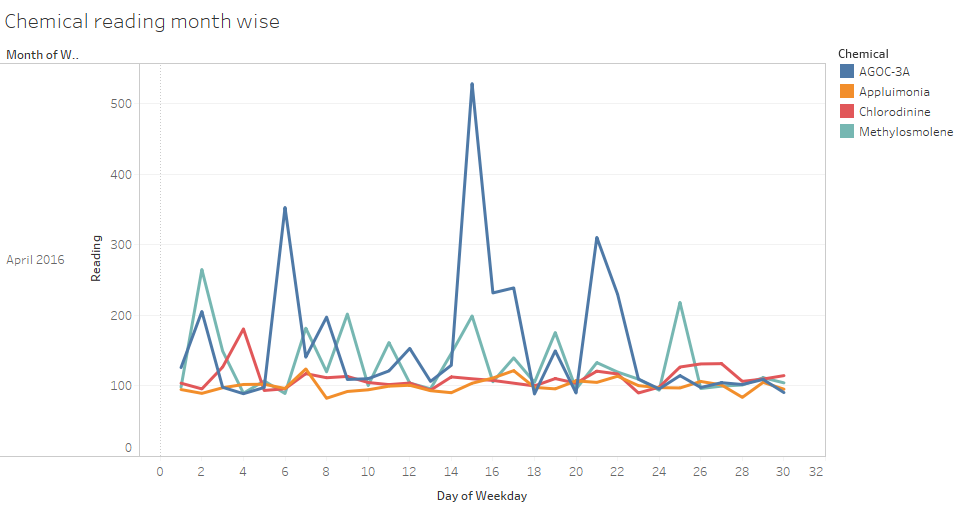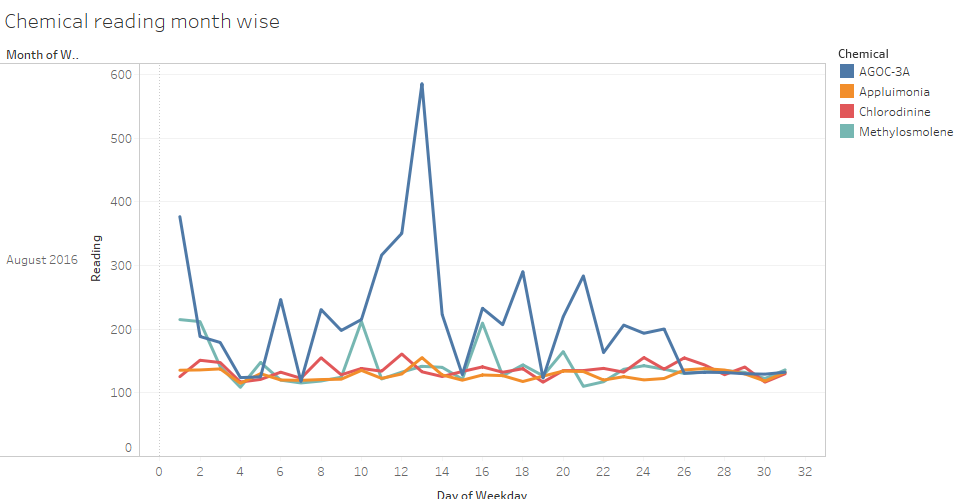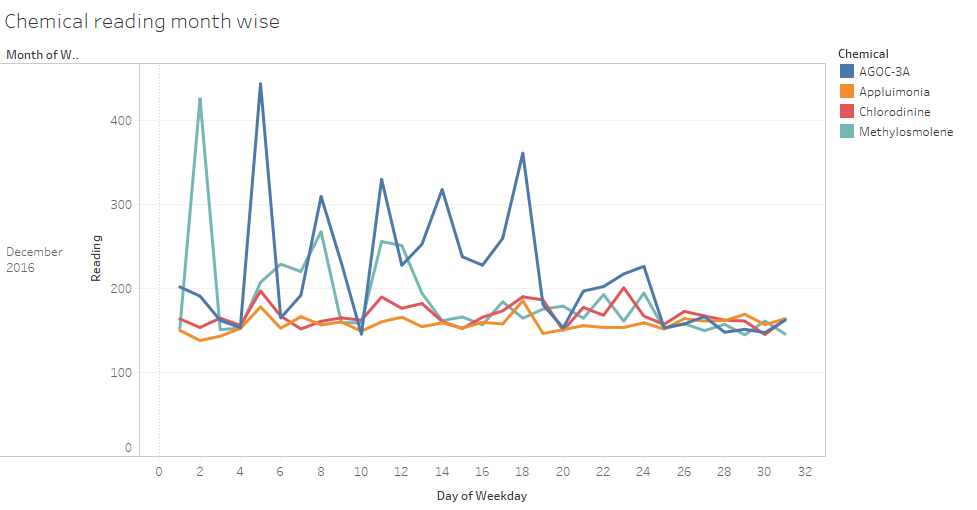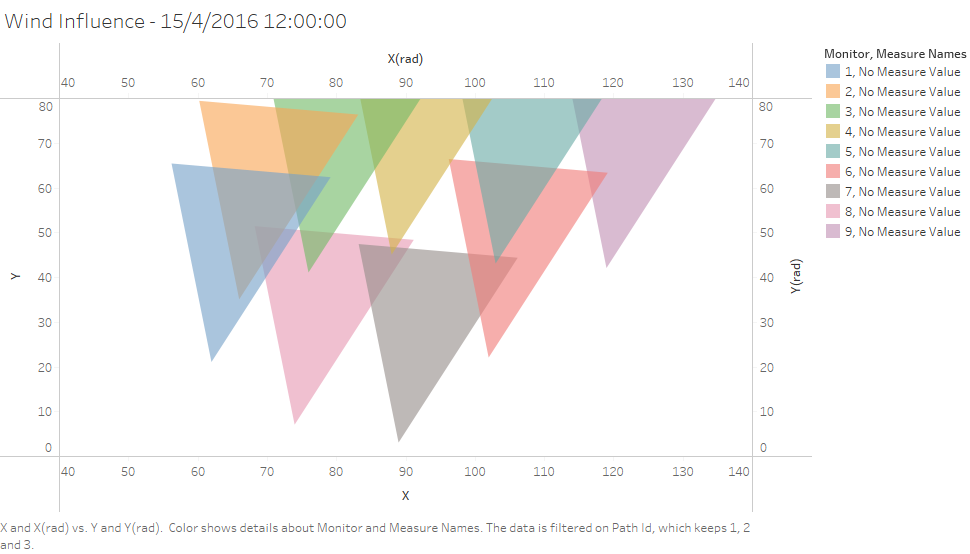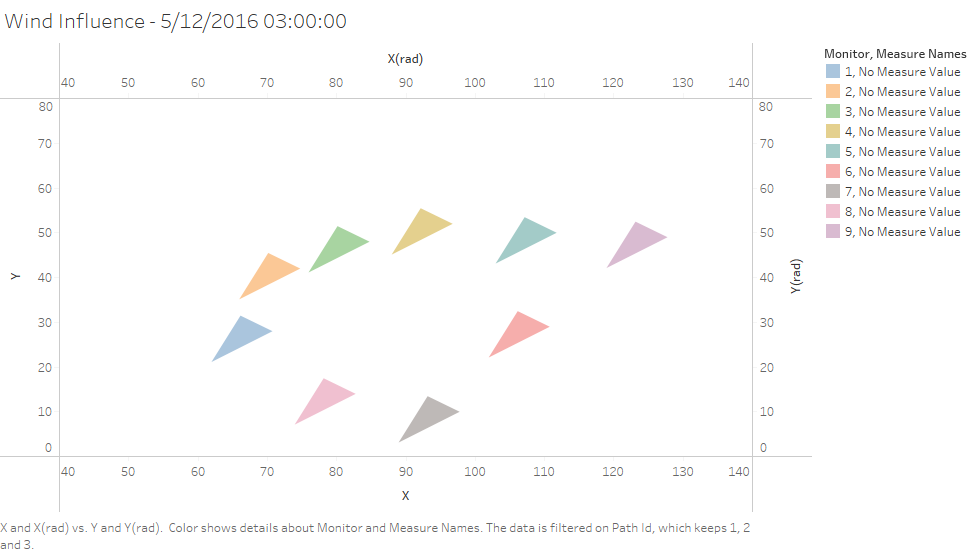Difference between revisions of "Visual findings"
Diptik.2016 (talk | contribs) |
Diptik.2016 (talk | contribs) |
||
| Line 100: | Line 100: | ||
</div> | </div> | ||
| − | Wind Influence on Sensors | + | Wind Influence on Sensors has been studied to get a better understanding. |
| − | [[File: | + | As promised in the above section, a deeper analysis of the dates with high chemical readings has been done. The findings have been as follows: |
| + | |||
| + | 1.The sensors recorded high chemical emissions from factories because the wind direction changes drastically from the usual at the following recorded timings. | ||
| + | For illustration purposes,I have chosen to depict wind influence on the exact moment of 15th April 12 pm and 5 Dec 3 am. Graph as shown below. | ||
| + | |||
| + | |||
| + | [[File:15 April - 12 pm.png|1100px]] | ||
| + | |||
| + | |||
| + | [[File:Dec 5 - 3am-wind.png|1100px]] | ||
Revision as of 21:24, 7 July 2017
Visual Analytics Science & Technology Challenge 2017 MC2
|
|
|
|
|
Visualization Journey through the nature reserve
Sensors operations and performance
Calendar Heat map
This calendar map helps visualize the sensor data across the days of April, August and December. The sum of recordings per day has been used to plot this map. As can be seen clearly, the days in color grey represent low or no(zero) readings. These days are :
1. April: 2nd and 6th
2. August: 2nd, 4th and 7th
3. December: 2nd and 7th
Analysis of Chemical readings
The following graphs reveal that the chemical AGOC-3A has been emitted the most across all three months. These are low-VOC and zero-VOC solvents. These solvents are less harmful to humans and environmental health.
December readings show a unsual hike in the emission of Methylosmolene. This chemical has toxic side effects in vertebrates and hence harmful.
As depicted in the calendar heat map for chemical readings, days of maximum chemical readings are as follows: 1. April 15 2. August 1,12 and 13 3. December 2,5,8,11-14,17,18, 23 and 24
I shall further analyse which factory and chemicals contribute to the same below.
Analysis of Factory Emissions
Wind Influence on Sensors has been studied to get a better understanding.
As promised in the above section, a deeper analysis of the dates with high chemical readings has been done. The findings have been as follows:
1.The sensors recorded high chemical emissions from factories because the wind direction changes drastically from the usual at the following recorded timings. For illustration purposes,I have chosen to depict wind influence on the exact moment of 15th April 12 pm and 5 Dec 3 am. Graph as shown below.

